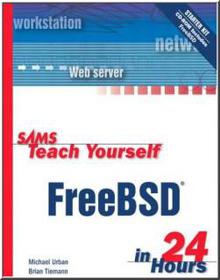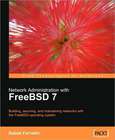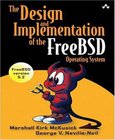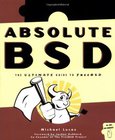FreeBSD
Sams Teach Yourself in 24 Hours

Book Details:
| Publisher: | Sams |
| Series: | Sams , Teach Yourself In |
| Author: | Michael C. Urban |
| Edition: | 1 |
| ISBN-10: | 0672324245 |
| ISBN-13: | 9780672324246 |
| Pages: | 456 |
| Published: | Dec 18 2002 |
| Posted: | Nov 19 2014 |
| Language: | English |
| Book format: | |
| Book size: | 9.24 MB |
Book Description:
There currently no books on the market that offer to teach FreeBSD to a novice. This book will be very attractive to the rushed and impatient, as well as to those who simply have a desire to learn the benefits of FreeBSD when compared to other proprietary operating systems. The book covers the most beneficial uses of FreeBSD, as well as the information needed to install and configure the operating system. This book will be the definitive tutorial reference for the growing FreeBSD market.
Download Link:
Related Books:
Absolute FreeBSD
The Complete Guide to FreeBSD
2nd Edition
FreeBSDthe powerful, flexible, and free Unix-like operating systemis the preferred server for many enterprises. But it can be even trickier to use than either Unix or Linux, and harder still to master.Absolute FreeBSD, 2nd Edition is your complete guide to FreeBSD, written by FreeBSD committer Michael W. Lucas. Lucas considers this completely revised and rewritten second edition of his landmark work to be his best work ever; a true product of his love for FreeBSD and the support of the FreeBSD community. Absolute FreeBSD, 2nd Edition covers installation, networking, security, network services, system performance, kernel tweaking, filesystems, SMP, upgr...
Network Administration with FreeBSD 7
Building, securing, and maintaining networks with the FreeBSD operating system
The book is a guide to Network admins who are interested in extracting full potential of FreeBSD. Security-one of everlasting concerns in the IT industry-can be tackled very effectively in FreeBSD. How do you do it? Read the book and find out. You can then move on to learn intricacies of FreeBSD. Just tweak a few parameters to make the network suit your environment. This book is for Network Administrators who would like to work with FreeBSD and are looking for skills beyond installation and configuration of FreeBSD....
The Design and Implementation of the FreeBSD Operating System
As in earlier Addison-Wesley books on the UNIX-based BSD operating system, Kirk McKusick and George Neville-Neil deliver here the most comprehensive, up-to-date, and authoritative technical information on the internal structure of open source FreeBSD. Readers involved in technical and sales support can learn the capabilities and limitations of the system; applications developers can learn effectively and efficiently how to interface to the system; system administrators can learn how to maintain, tune, and configure the system; and systems programmers can learn how to extend, enhance, and interface to the system. The authors provide a concise overview of FreeBSD's design and implementation. Then, while explaining key design decisions, they detail the...
Absolute BSD
The Ultimate Guide to FreeBSD
FreeBSD is a powerful, flexible, and cost-effective UNIX-based operating system, and the preferred server platform for many enterprises. Includes coverage of installation, networking, add-on software, security, network services, system performance, kernel tweaking, file systems, SCSI RAID configurations, SMP, upgrading, monitoring, crash debugging, BSD in the office, and emulating other OSs....
2007 - 2021 © eBooks-IT.org




